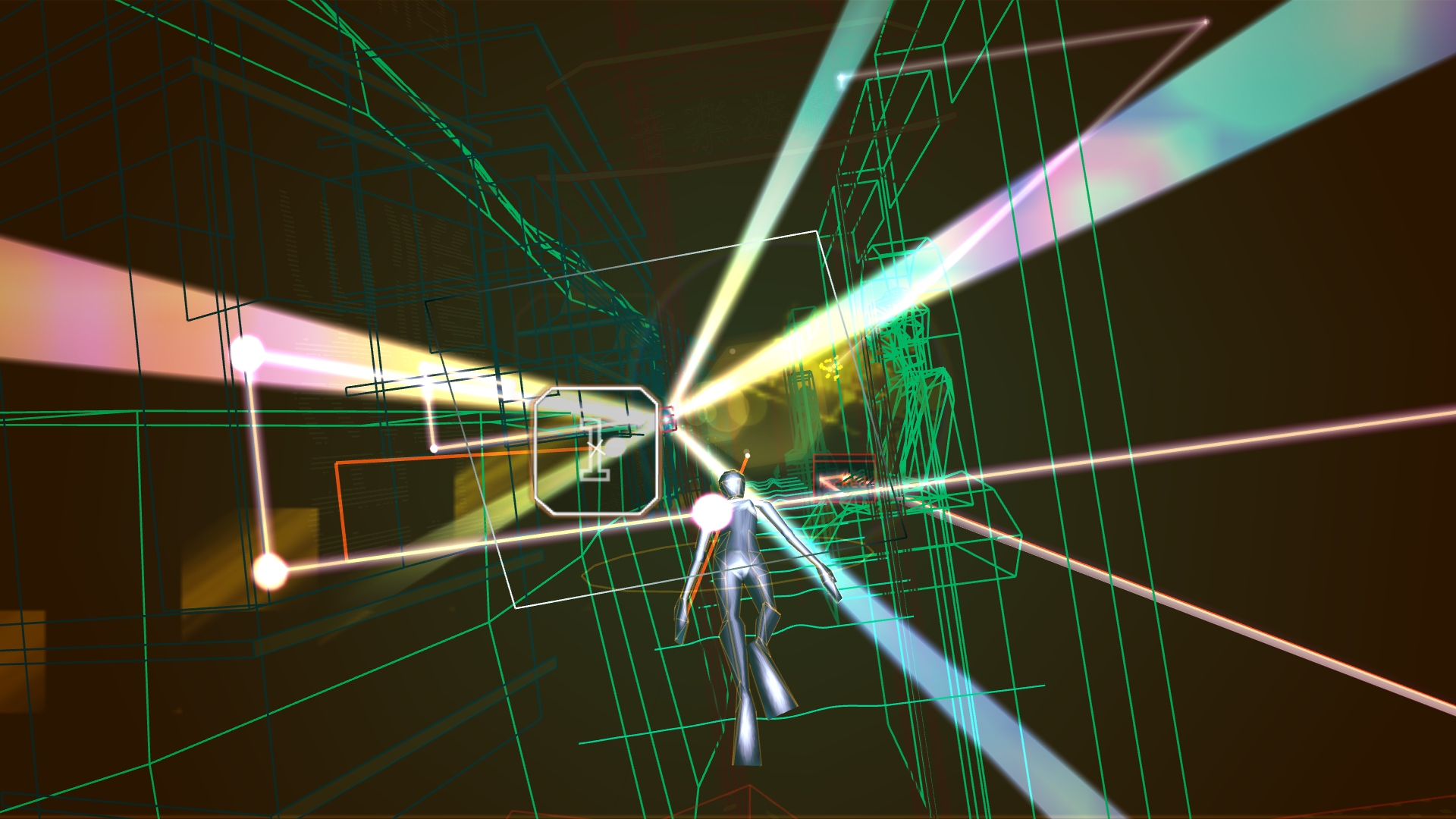Remember Rez? Originally a Dreamcast game way back when, it’s bumped around–mostly on Sony platforms–over the years. A kind of hypnotic, surreal rails shooter-meets-rhythm game, Rez has always been a kind of cult classic. As one of the premiere launch titles for the PSVR and now on Oculus Rift and HTC Vive, however, it’s about to make a proper resurgence with Rez Infinite.
If you’re new to the world of Rez, it is, as mentioned, an on-rails shooter. This means you don’t really control your character, but instead you control what the strange figure before you shoots at. Rez Infinite does expand the range of motion a little over past games, but the heart of the gameplay remains largely the same as it was 15 years ago.
There are a lot of reasons both aesthetically and technically why Rez Infiniteis a perfect fit for Sony, Oculus and HTC’s new VR tech and why rail shooters in general are. Much of the problems with the majority of VR experiences comes with too much movement–fast turns in particular, especially with first person shooters.
In Rez Infinite, the speed of the game isn’t really controlled by the player, so the movement you’re exposed to is largely pre-defined. There’s no sudden turning in opposing directions as with a first-person shooter you’re fully in control of. The result is a liquid smooth, fully immersive experience. Rez Infinite feels more open than previous games though–it’s a rail shooter that gives you the illusion of freedom.
A big part of that is simply the feeling of being inside the game via the headset, which is something the regular version can’t hope to match. You can play Rez Infinite without the headset–as in, just on your TV or PC monitor–and it’s still great, but ends up paling in comparison to the full-on HMD-based headtrip. On the Rift and Vive you’ll enjoy sharper image quality but they’re largely the same as the first-released PSVR version.
At its core, Rez is all about the chill. It can get a bit hectic, but mostly it’s a kind of sight and sound excursion into cyberspace (which is basically the plot.) Everything about the presentation, from the smooth trance soundtrack to the beautifully neon wire-frame graphics, is perfect for the groove the game creates. More importantly, it’s not overly-taxing on the PS4 itself, enabling a 120 FPS (reprojected from 60) HD experience within a fully 360 degree 3D world.
Rez Infinite can be played with either the standard controller or the your respective motion controllers. I liked the Move, Touch, and Vive wand controller’s motion sensing, but there’s no particular negative to playing with the gamepad.
The game uses both the controller and head tracking to aim. So, the controller was good for rapid movements across the screen while your head is great for fine aiming. Character movements are smooth and airy, making the action feel far more natural than some of the other games we’ve played in VR.
Rez manages to hit all the right marks for a launch title. It’s visually impressive without really going overboard. The gorgeous cyberspace landscapes, heavily bent on geometric shapes and lines with tons of shiny particles, seems a natural fit for VR.
The movement of your onscreen character is limited and the framerate is rock solid. The gameplay is simple enough to use the game as a demo for curious non-gamers, but has enough challenge for fans of the series.
Rez considers the limitations some other launch titles have tried to skirt over and provides a VR experience that just works. It’s a simple game that relies on its minimalist style to provide a thoroughly beautiful world to just fly inside of. If there’s a downside here, it’s that past the gorgeous presentation, it’s still just a straightforward targeting game. That’s not an issue for me though, because the trip is well worth it.
Rez Infinite is now availabe on PlayStation VR for $29.99 and Oculus Rift and HTC Vive for $19.99. Check out these official review guidelines to find out more about our process.
Jason D’Aprile is a freelance writer with work appearing in prominent publications such as Gamespot, Playboy, and many others.




























